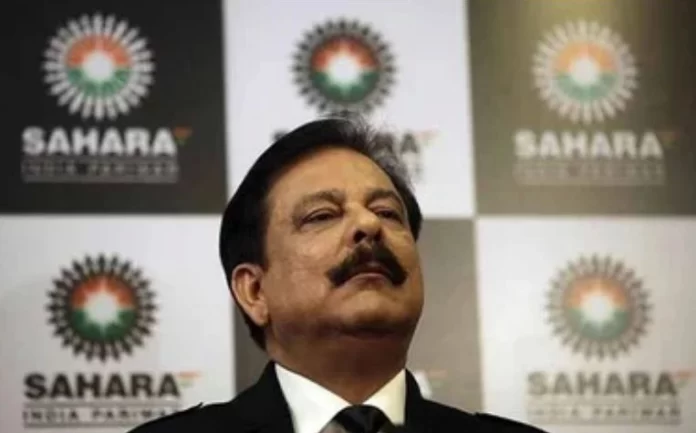By Sujit Bhar
With the death of Subrata Roy, the Sahara India group supremo, on November 14 in a Mumbai hospital after prolonged illness, the refund status of the thousands of crores duped from investors by several companies in the group has created a complete mess.
While the Sahara-Sebi Refund Account (SSRA) now boasts of a Rs 25,163 crore corpus (as of March 31), it is being said that in the 11 years since the refund account was created, hardly any claimants had come forward. It is also being said that the government is thinking of moving all unclaimed funds—an amount that could touch Rs 20,000 crore—to the Consolidated Fund of India (CFI).
What is to happen to the money if it is moved to the CFI from the SSRA is another matter, but at this point one needs to know the status of this entire shadowy scenario.
It has been said that over a period of 30 years, there had been an inflow of around Rs 1 lakh crore from 7-8 crore investors into the coffers of different Sahara group companies, and majorly through two companies—Sahara India Real Estate Corporation and Sahara Housing Investment Corporation. The shadiest part of all is that these investors have never been identified in a single place. The collection carried out by Sahara as a non-banking finance corporation on different schemes, had never seen any oversight from the Union finance ministry, or the Securities and Exchange Board of India or the Reserve Bank of India or the Serious Fraud Investigation Office. It was also not investigated by the Ministry of Cooperation (which was formed in July 2021), whose minister is Amit Shah, also the Home Minister.
It has to be noted that the Rs 25,000-odd crore in the fund is actually the total of the Rs 15,000-odd crore that Sahara had deposited (against a demand of Rs 25,000 crore), plus interest accrued. Sahara was asked to deposit Rs 25,000 crore, against which the company managed to deposit Rs 15,000-odd core. The court called up Roy and, as a result of a contempt proceeding, Roy had to spend time in jail.
Later, the Central Registrar of Cooperative Societies received a transfer of Rs 5,000 crore from SSRA, intended to be used for paying genuine depositors’ legal debts. To expedite the refund process, Amit Shah set up a special portal for Sahara depositors.
That sounded pretty hollow in the face of what had happened during the 11 years that the total fund was available from the SSRA. In those 11 years, SSRA was able to identify and pay 17,526 applicants involving 48,326 accounts, but the payout was of only Rs 138 crore.
It is said that either depositors failed to produce the right documents, or their applications were found faulty, or they did not even know the existence of this fund. Sahara had collected this massive amount through micro investments from farmers, rickshaw pullers, small-time workers, people who were mostly illiterate and had no idea of the scale of the Ponzi scheme. It would be too much to expect proper paperwork from these people, mostly from rural Uttar Pradesh and Bihar.
Three things follow. The first is that the Central Registrar of Cooperative Societies portal, which now holds Rs 5,000 crore for disbursal, needs on-portal submissions and Amit Shah made it clear that pre-requisites, such as Aadhaar card, PAN and bank account (all linked) are must. This seems a prescription for another failure and it is unlikely that all of Rs 5,000 crore will be properly disbursed. Also, it has to be remembered that many of the depositors had paid a maximum of Rs 1,000 in deposits. In wanting to avail of that amount (and, probably, the small interest accrued therein) the applicants will have to pay for creating a proper Aadhaar, for resurrecting their defunct bank accounts, for linking them and much more.
The second is the problem of the remaining Rs 20,000 crore. If the government takes that amount over to the Consolidated Fund of India, what would it be used for? Would it be used to wipe out a small portion of the large budget deficit? Would it be used in developmental programmes? Could it surreptitiously make its way into another opaque fund, providing a boost to the ruling party before the 2024 general elections? Or, could it even be simply lost in accounting?
The third problem is bigger. It is not clear who the investors were, because no consolidated list has been kept. But it is somewhat sure that at least Rs 1 lakh crore of deposits had been taken in by different Sahara group companies. In that context, we are probably dealing with a small percentage of the deposits, even accepting that Sahara did pay back many of its investors of its own accord. What happens to the rest of the money?
The biggest problem has been the accounts and of the overseeing authorities who have never cared to go out and try and collect all data.
That leaves millions of investors out in the cold, never to see a single paisa of their investments come back. That also leaves the entire country’s slack financial system, in a state of limbo.
It is small comfort to the small investors that Madhabi Puri Buch, chairperson, SEBI, has said that the Sahara matter will continue for the capital markets regulator even after the death of Roy. That, obviously, aligns with a special court’s refusal to dismiss the case against Sahara India Real Estate and other criminal matters being investigated by SEBI, just because Roy is now dead.
In the end, as things stand, India’s regulatory muscle and intent are being seen in poor light. That does not augur well for the country.


